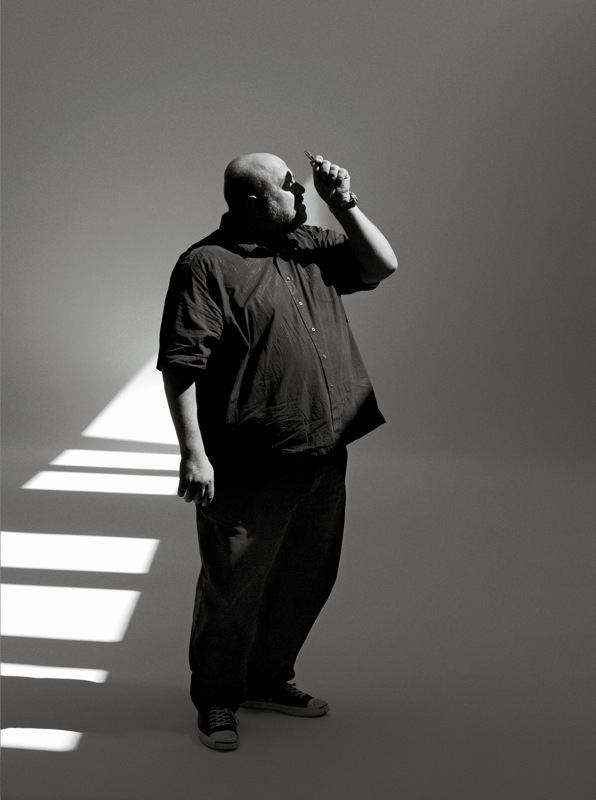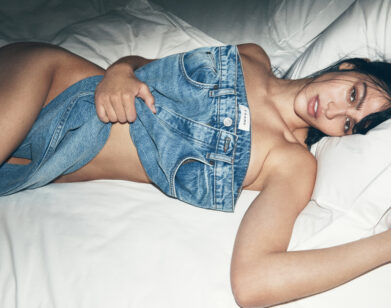Harris Savides

I really think that everybody’s job who makes film is to trick an audience for two hours into falling into the story and not thinking about their laundry or their dog.Harris Savides
Harris Savides wanted to be a fashion photographer. Instead he had to settle for being one of the greatest cinematographers, creating the world even before the actors arrive to carry us through it. Savides’s recipe for reality seems to be a rather simple one: Don’t overdo it. And, in fact, every film the 51-year-old native New Yorker has D.P.-ed since he got into the game in the early ’90s has been beautifully unaffected-a heightened universe but still a believable one. His next film, the biopic Milk, is his latest endeavor with Gus Van Sant, a director who shares that rare ability to reel us in without having to blow us through the roof with special effects. The intrepid eye opens up about working with a master like Van Sant.
DAVID COLMAN: You live in New York, don’t you?
HARRIS SAVIDES: Yes. I live on the Upper West Side. I used to live down in TriBeCa. You find a good place and you move uptown, and then you wonder why you did it.
DC: Did you ever live in L.A.?
HS: No. I’ve been there for extended periods and have rented a house, but…
DC: Never tempted?
HS: Tempted, yes. But New York is home.
DC: What was the temptation? All the sunlight?
HS: No. I don’t like the sunshine there. It bothers me. It’s too bright, too sunny. It’s the way things look to me in the glare. I rented a house in Hancock Park at one point. I remember always turning on Beverly to head west and wincing. There was also nothing in the sky. There weren’t even buildings. It didn’t seem natural. I don’t know why New York City seems natural, but it does.
DC: It’s interesting we should mention this because what’s so striking about your work is the light. You have a remarkable flair for it. In some of your movies, the cinematography is virtually a character. In Margot at the Wedding [2007] the light was gorgeous.
HS: That also had a lot to do with what the director [Noah Baumbach] wanted. A lot of times, directors tell me what they want, and I’ll try to figure it out. I don’t ever want to come to the table with my preconceived notions.
DC: That’s what being a good director of photography is all about. It’s like what they say about politeness-true politeness is something people don’t notice, not something they do.
HS: I agree with you. You shouldn’t see the photography in the film.
DC: What did you like about working on Milk? It seems different from other films that you’ve worked on with Gus Van Sant.
HS: This is the first real historical drama he’s done, and it’s hard to make a movie about a figure that people know and remember. When you don’t have to sell the audience on what really happened, it offers you more creative license. Here, we had to honor Harvey Milk, so it was, in a way, much harder.
DC: You two have become masters of suggestion and nuance and letting the audience read into things. In Milk, you’re dealt a hand of pretty unassailable facts. So you can’t rely on mood. You’ve worked substantially with Gus. Is he your favorite collaborator?
HS: I don’t want to say favorite, but I love him. I like what he does and the way he works, and we seem to communicate well.
DC: You said in one interview that you like rooms, not people.
HS: Oh, I regret saying that. Although it’s kind of a truth. I see a space, light it, and then have the actors live in that space or do whatever they need to do when they enter that space for the story. I don’t want to light their faces and their bodies specifically. I like to light the space.
DC: Was there a moment when you saw something too dramatically lit and just thought, No, or was it a progression to arrive at your style?
HS: It was a progression. When I was younger, I liked movies that were very strongly lit, like Blade Runner [1982]. But now I just want things to be more natural. I don’t know why that is. I think that people can’t go to a movie and see something that’s lit . . . It’s too photographic. I don’t think you can ever make a movie that looks amazing when you’re trying to make it look amazing.
DC: What’s the 30-second Harris Savides CV? You grew up in New York City, right?
HS: Yes. I grew up in the Bronx.
DC: And you wanted to be a fashion photographer?
HS: I did. That’s what I fell in love with. I started in film school just because I didn’t even know what to study. You had to take some photography classes in film school, and I fell in love with the immediacy of that because you could do this stuff and process it and see it right away, and you did it by yourself. Whereas with film, everybody talked about it, but nothing happened. And everybody was watching Kubrick movies. It was like we never could actually do that-we could just be in awe of the stuff.






